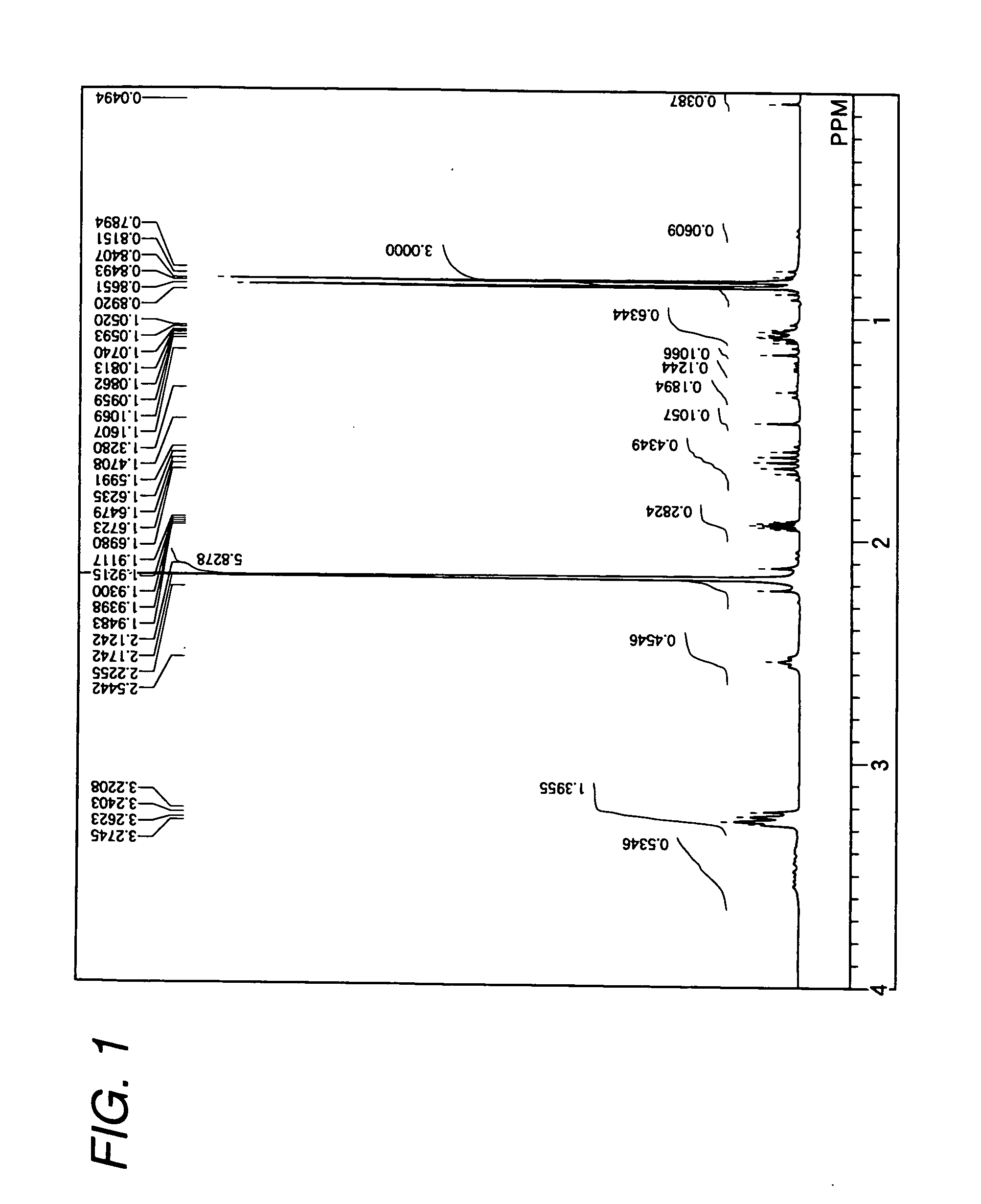Solid catalyst for olefin polymerization, olefin polymerization method, and olefin polymer particle produced by the method
a technology of solid catalyst and olefin polymerization, which is applied in the direction of organic compound/hydride/coordination complex catalyst, physical/chemical process catalyst, chemical apparatus and processes, etc., can solve the problems of aggregation or adhesion in the polymerization vessel, become an obstacle to a long-term stable polymerization process, and fouling tend to occur, etc., to achieve excellent particulate morphology, good efficiency, and low melting point
- Summary
- Abstract
- Description
- Claims
- Application Information
AI Technical Summary
Benefits of technology
Problems solved by technology
Method used
Image
Examples
example 1
—Manufacturing Solid Catalyst (K) for Olefin Polymerization.
[Process P1]
[0139]5.01 g of silica gel (trade name: H-122 by Asahi SI Tech Co., Ltd.) dried at 200° C. under nitrogen atmosphere and 44 ml of dehydrated toluene were added to 100 ml of four-neck flask, sufficiently substituted with nitrogen and equipped with stirring rod, and then, heated to 50° C. with oil bath. 2.5 ml of toluene solution (1M) of triisobutyl aluminum was added, and then, 19.0 ml of toluene solution of methylaluminoxane (9.1 wt % aluminum concentration by Tosoh Finechem Co.) was further added. 30 minutes reaction at 50° C., and then 4 hours reaction at 95° C. were performed. After leaving at rest at 60° C., 36 ml of supernatant solution was removed by decantation, and then, toluene slurry of silica supporting methylaluminoxane was obtained.
[Process P2]
[0140]Toluene slurry of silica supporting methylaluminoxane obtained in the above process P1 was kept at 35° C. and 10 ml of hexane followed by 20 ml of hexan...
example 2
[0141]Except for using silicagel (trade name: H-122 by Asahi SI Tech Co., Ltd.) wherein fine particles having diameter of 4 μm or less are eliminated by classification and 16.8 ml of toluene solution of methylaluminoxane, the same manufacturing method was performed as in example 1. As a result of analysis, zirconium in said powder was 0.18 wt %, aluminum was 16.7 wt % and silicon was 23.2 wt %. A loss of ignition was 14.1 wt %. Peaks of silicon and aluminum elements were confirmed by element analysis of residue after ignition.
example 3
—Manufacturing Solid Catalyst (K′) for Olefin Polymerization—
[0142]10.02 g of liquid paraffin slurry manufactured in example 2, 6.51 g of filtrate filtered by membrane filter and 30 ml of hexane were added to 200 ml flask and heated to 34° C. 2.0 ml of 1 mol / L hexane solution of triisobutylaluminum, 2.0 ml of 10 g / L hexane solution of polyalkylene oxyglycol (trade name: ADEKA Pluronic L-71 by ASAHI DENKA Co., Ltd.) were further added. Ethylene was blown into gas phase part at a rate of 1.5 NL / h and polymerized for 4 hours at 35° C. Residue ethylene was purged with nitrogen and then, the obtained slurry was filtered with membrane filter. The obtained powder was dried under reduced pressure for 3 hours and 7.56 g of solid catalyst (K′) was obtained.
PUM
| Property | Measurement | Unit |
|---|---|---|
| density | aaaaa | aaaaa |
| Tm | aaaaa | aaaaa |
| temperature | aaaaa | aaaaa |
Abstract
Description
Claims
Application Information
 Login to View More
Login to View More - R&D
- Intellectual Property
- Life Sciences
- Materials
- Tech Scout
- Unparalleled Data Quality
- Higher Quality Content
- 60% Fewer Hallucinations
Browse by: Latest US Patents, China's latest patents, Technical Efficacy Thesaurus, Application Domain, Technology Topic, Popular Technical Reports.
© 2025 PatSnap. All rights reserved.Legal|Privacy policy|Modern Slavery Act Transparency Statement|Sitemap|About US| Contact US: help@patsnap.com



